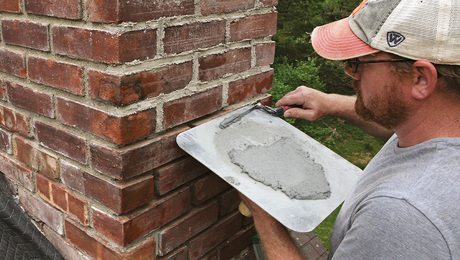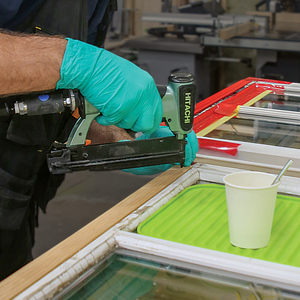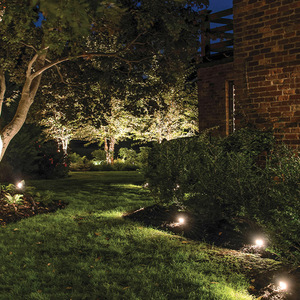Recently acquired a cabin in southeast MO with a deep well (85+ ft deep) fresh water system.
Cabin is used seasonally. Other than draining the pressure tank, hot water heater and the toilet tank and blowing out the water lines within the house and adding RV antifreeze to the toilet bowl and each drain trap is there anything else I should be doing?
I am concerned about the water in the line between the actual pump suspended in the well and the exposed PVC piping to the pressure tank in the cellar.
Your thoughts and suggestions would be much appreciated. Thanks in advance for your help.



















Replies
bump
How insulated is the cellar?
If halfway decent, should have no trouble. None at all for the pipe in the well.
Case history, Springfield IL., although a water main vs. well.
Unheated except occasionally for 20+ years, 4 feet of iron pipe exposed between wall and shutoff, came th;ru wall at 4 ft deep. Was in a full 7 ft deep basement, 12" brick wall, 3/4" flooring above, no insulation otherwise, fairly well sealed up for drafts, air exchange.
The 4 ft of pipe never froze, even though there were at least 2 multiple day stretches in that 20+ years where the outside temp hit 30F below. Enough ground 'heat' came thru the basement floor to keep the basement over freezing.
If your 'cellar' is just a small hole, consider adding a drain at the well head. There should be no problem with the piping within the well, just what is exposed.
Thanks for your reply.
House sits over a dirt crawl space on stone pillars. A significant portion of the perimeter is open to the outside air. The cellar is a deeper dirt floored area, approximately 8' x 16'. There is no insulation.
I am unsure how deep the line between the well head and the house is buried. In this area it should probably be somewhere between 36" & 48". There is approximately 6' of this line exposed, protruding from the crawl space into the cellar area.
Given that this line is buried at the wellhead, how might a drain be installed and operated?
Thanks again.
Seems to me that the possibility of freezing water inside this exposed portion of pipe depends upon the physical arrangements concerning it, the pressure tank, just where the valve is located that you'll use to drain the pressure tank and the presence of any check valves. Water that isn't there, can't freeze. Consider that if the PT drain valve is even a bit lower than the horizontal PVC pipe, all portions of the supply pipe on the tank side of any check valve should also drain sufficiently when you drain the pressure tank. Use a level to determine what the situation really is as regards all that.
If it's apparent that all of the pipe won't drain along with the pressure tank, you could then install a dedicated drain valve in that line. Use your level to determine the best place for it if there's much pitch on the pipe, while also paying attention to the location of any check valves in the line.
What you'll likely need to install that new drain valve with the greatest of ease is a couple of PVC repair couplings. Repair couplings have no internal shoulder and so will slide completely onto the pipe and out of the way. You can cut a section out of the pipe, slip a repair coupling on each end, insert your new drain valve and perform the necessary solvent welding of the couplings, all without having to move the pressure tank even a bit to gain some assembly room.
It might be that all of the horizontal pipe will already drain back either out the pressure tank drain or into the well, if there's a bleeder valve in your particular well arrangement and it's working properly. But even if there is a bleeder valve, adequate drainage could still be dependant upon any significant pitch of the horizontal pipe section.
http://www.pumpsonline.com/AirChargePic.htm
I had to leave a house unattended with water to the basement during a MT winter, so i dropped some old FG batts over the area the pipes came through the wall. I don't know if it needed it, but it went below freezing in that basement and no pipes broke.
Thanks for your reply.
I will definitely consider using fiberglass bats over the exposed line entering the cellar from the crawlspace.
Thanks again.
Could you use some of that electrical heat tape for water pipes that has a thermostat built in? That's what I use in my pump house. It comes on when the temp drops below 35°.
I also have a infrared heat lamp on a thermostat that is directed onto the side of the tank. It's set back about 2' from the tank. Got the thermostat at Graingers. It comes on also at about 35°. Or, you could even wrap the tank with heat tape.
Over 15 years, nothing in the pump house has froze up.
Pipes, stool, and hot water tank in the house are drained. I use a big sponge to get all the water out of the stool tank and cavity. Pump house is cement block about 100' away from the house.
PlaneWood by Mike_in_Katy (maker of fine sawdust!)
PlaneWood
Thanks for your reply.
The well is 85+ft deep. The well head is exposed above ground approximately 18". There is no well house. I have considered heat tape/heat lamps, but would prefer to shut off the power when I am not there for fear of rodents chewing the 55+ year old wiring in this old farmhouse and starting a fire.
Thanks again.
Jim -
My well is hand dug 6' diameter and rock lined down to 40'. In the winter, warm air rising from the well helps keep the pumphouse warm.
PlaneWood by Mike_in_Katy (maker of fine sawdust!)PlaneWood
Can you open things up on the pump side of any check valves & let the water drain back into the well?
Thanks for your reply.
The pump is suspended in the well casing 15 or 20 ft from the bottom (the well is 85+ ft deep, I have been told). I believe the check valve would be below the pump.
Should I have pump service out and pull the pump?
Thanks again.
It sounds like your well is a modern one, connected at the well with a pitless adapter.
My well is like this and has a pump at the bottom, and a check valve at the entrance to the house, just before the pressure tank.
When we were building we connected a generator to the well to pump it off, and it acted as though there was no check valve at the pump, since we'd have to wait 30 seconds or so for water, and could hear it rising in the pipe.
So opening your sytem upstream of a check valve may drain it entirely back into the ground.
Treat every person you meet like you will know them the rest of your life - you just might!
If the wellhead is reasonably sealed, piping below ten feet or so in the well will be safe. How deep is the line from pump to house? (And what's considered the frost depth where you are?) Does the pipe exit below or above grade?
Thanks for your reply.
The pump itself should be fine. It is suspended in the well casing approximately 15 or 20 ft from the bottom and the well is said to be 85+ ft deep.
I am not sure how deep the line is from the well head to the house's crawl space, but it should probably be 36" to 48" deep. Subzero weather is rare, but not unknown in southeast MO.
Within the crawl space, I believe the line is probably buried no deeper than perhaps 12-30" and it is exposed within the cellar area approximately 6 ft.
Thanks again.
I am in the KC area.Around here some cities use 30" others 36" for frost depth.Depending on how South that SE is I would think that 30" is plenty.